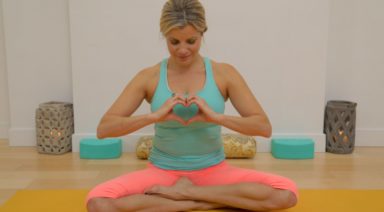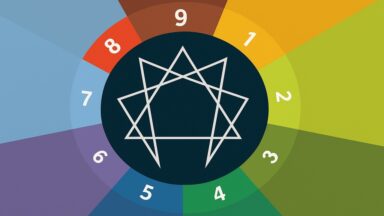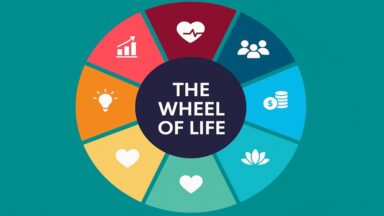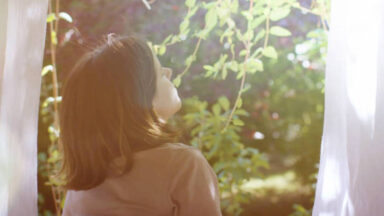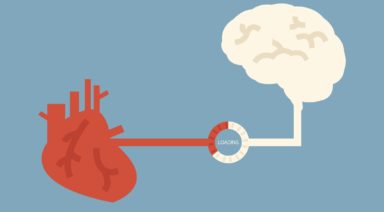3 Ways to Mend a Broken Heart

There is that undeniable ache; that wrenching pain in the center of your chest. The feeling that you can’t breathe; some days you feel as if you are going to pass out, in fact there is a sense that a part of you did just die. You are heartbroken. Maybe from the loss of a friend, a family member, or someone’s decision to end a relationship. Your heart hurts, but the doctor says your cardiac labs are normal. You are ‘just’ grieving.
Though there may be no lab markers that show heart damage, there is a distinct effect of extreme emotional stress on the body. The New England Journal of Medicine, John Hopkins University and several researchers have pieced this together in various clinical and historical perspectives. Let’s sum it up in 5 statements:
- Loving Relationships
Loving relationships emphasize certain neural pathways and neurotransmitters. One of which is “brain dopamine”, the neurotransmitter responsible for feelings of reward: pleasure, satisfaction, motivation.
- Loss of Loving Relationships
Loss of a loving relationship creates a void in the emotional brain, similar to addiction withdrawal, as brain dopamine is left wanting.
- Adrenaline
In response to the brain dopamine drop, alarm signals are sent for the body to release adrenaline — the hormone created from “blood dopamine” (blood and brain don’t share neurotransmitters) — along with other stress hormones and protein peptides.
- A Flood of Hormones
In their frenzy, these stress hormones flood and stun the heart.
- Lower Functioning
Temporarily, during this flood, the heart has a lowered ability to function, creating heart attack like symptoms.
In sum, Broken Heart Syndrome (also known as stress cardiomyopathy) is a phenomenon that can occur when an individual is under extreme loss-of-love stress.
Medicine has recognized that heartbreak can be a physical phenomenon. It’s not all in your head, my dear.
The Events That Hit the Hardest
Although many of us have made it through stressful events unscathed, there are some of us whom these events hit harder, for various reasons. In the latter individual, it is quite possible for their feelings to actually create physical pain. A broken heart can manifest in heart attack symptoms, where no physical damage has occurred. There are no long term effects on the heart, but during the time of your emotional helplessness, your heart is literally rendered helpless as well.*
Possibly, the oft analyzed love suicide of Juliet for Romeo that Shakespeare wrote of, is the dagger that demonstrates the helplessness of the heart during tragic love. Maybe those men of olde really knew much more about our how our hearts function than we thought.
The most stressful events in the Holmes and Rahe Life Stressor scale? Death of a Spouse and Divorce. As you take a closer look at the stressors, many of them are based in disappointment or lost love. Broken hearts are the number one source of stress in our society. These sources leave no evidence outside of tears and days of full of chips and Netflix.
Time does heal all wounds it is true, and fortunately stress cardiomyopathy heals as well. But there must be something we can do to mend ourselves in the meantime. We can emerge as bright and resilient lovers, rather than frightened and traumatized soldiers.
Tips to Mend a Broken Heart
Gaia’s [The Yogi’s Heart(/series/yogis-heart) meditation and yoga guide can help you open and heal your heart.
Plus, here are three more tips to mend a broken heart.
1. Take Rhodiola Root
Under the supervision of a Naturopathic Doctor, this is a powerful little herb that grows in the tundra and modulates your adrenaline rushes. So powerful in fact, that it interacts with other medications, so it needs to be monitored by someone who knows herbs and drugs. When the devastating new hits, Rhodiola can help your emotional body digest it slowly, at a pace that your heart can handle.
2. Take Hugs from friends
Ask your friends for hugs. Not the kind where you are crying on their shoulder, but the kind where you both give and receive. Touching another human being whom you feel safe around releases oxytocin, a hormone that can shut down those heart-breaking stress hormones. Realize that touch is part of what you are missing.
3. Take a break on the heart openers
Instead, do 5 power poses every day:
Utkata Konasana – Goddess, or Fiery Angle Pose. Get strong get grounded, build strength in your powerful legs and gluteus muscles. Gain the ability to support yourself.
Adho Mukha Vrksasana – Handstand or Dog on the wall. Flip your perspective. Practice holding yourself up. That is what handstand is all about. Trust your own hands.
Vrksasana – Tree. Root down and rise up. Balance. If you want to grow from this experience, you’d best find your roots, and grow some new branches.
Virabhadrasana II– Warrior II. Take up more room, allow yourself to be pulled in several directions, while you stay steady, holding upright in the center.
If you really want to do a backbend/heart openers, make it one of these two only:
Setu Bandhasana (Bridge) or Wheel (Urdhva Dhanurasana) with this particular focus: The strength in your arms and legs is more valuable right now than the bending of your back. Try to lengthen rather than curve your back. In Wheel, only if you are steady, bend and straighten your elbows like upside down push-ups.
Then, always. Breathe.
- Note: If you are experiencing chest pain that resembles heart attack symptoms, please go to a hospital before diagnosing yourself with Stress Cardiomyopathy.
10 Signs That You're a Free Spirit

When we think of the term, “free spirit,” we imagine a person who steers their own course in life, unencumbered by common burdens or concerns. Some look at those who identify as free spirits as being irresponsible or childish, though this mindset offers lessons to inform us how we can live life on our own terms.
If you’re someone who considers yourself an independent thinker or doer, who pushes against society’s envelope and is deeply committed to finding your own path, you may be a free spirit. Are you curious as to whether the free spirit path is for you?
Ten Signs You’re A Real Free Spirit
If you identify with any of these signs, chances are you have a free spirit waiting to be let loose into the world!
1. You’re Independent-Minded
Independent people thrive on listening to their own voices, regardless of the situation or circumstance. This key personality trait of the free spirit is a common one in innovators, entrepreneurs, and creative artists, as an independent streak also relies on a strong foundation and belief in oneself.
Are you the person in the room who always finds a new way of looking at things? Free spirits defy expectations and will always see the unexpected in equally unlikely ways. These kinds of thinkers can be great assets on a creative team, as they will always find a new way to look at an idea. Free spirits are also incredible advocates for innovation, as they are not afraid to stand up and for their ideas, no matter how much it veers from the rest of the crowd.
2. Fear Doesn’t Stop You
Dale Carnegie said, “Do the thing you fear to do and keep on doing it… that is the quickest and surest way ever yet discovered to conquer fear.” Free spirits feel fear, but they don’t allow that feeling to be something that stops them. Instead, a free spirit will work through the fear and let it serve as a motivating factor. In fact, most free spirits will tell you that any success is not worth having unless it’s achieved with a healthy dose of moving through fear.
3. You Have a Strong Spine.
While it can be said that free spirits go with the flow of life, they accomplish it with a healthy and strong sense of self. This translates into living with intention and purpose and one that is not defined by anyone else. A free spirit walks the talk and in many cases, creates the language that makes up the talk.
4. Free From Attachment
To live as a free spirit, one has to be willing to let go, or walk away from the things that might weigh others down such as conventional relationships, careers, and other traditional trappings of modern life.
You might find a free spirit selling their material goods and living in a van, or not staying tethered to one place for very long. Or perhaps a free spirit may choose to live simply with a commitment to not participating in consumerism. Minimalism is often a choice of free spirits as this lifestyle embodies freedom from many of the things that weigh us down. Free spirits enjoy their own company and thrive on solo time, and putting themselves first.






